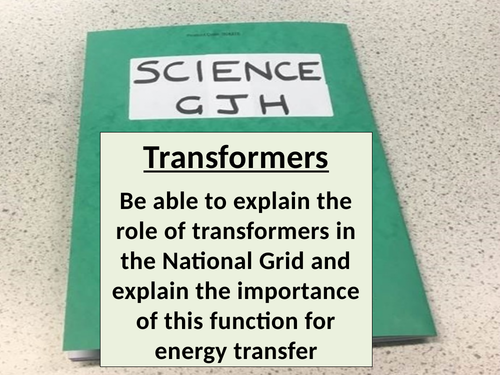



This is a fully-resourced lesson that looks at the role of transformers in the National Grid, explains why they increase or decrease potential difference and then uses the given equation to calculate potential difference or the number of turns on the primary or secondary coil. This lesson includes an informative lesson presentation (25 slides) and two question worksheets.
The lesson begins by introducing the devices that are transformers and showing the students that there are two types, step-up and step-down. Students will learn that step-up transformers increase the potential difference and step-down transformers decrease the potential difference. Moving forwards, a series of calculations are used to get the students to understand why these changes in potential difference occur. Students are guided through this section so that they are able to complete a summary passage about the roles of these devices. They will then be shown the equation connecting potential difference and number of turns which they do not need to recall but have to apply. Again, a worked example is used to visualise how workings should be set out before students are challenged to answer two sets of questions, the second of which involves the use of a second equation. Progress checks like these are found at regular intervals throughout the lesson so that students can assess their understanding.
This lesson has been written for GCSE students
Something went wrong, please try again later.
This resource hasn't been reviewed yet
To ensure quality for our reviews, only customers who have purchased this resource can review it
Report this resourceto let us know if it violates our terms and conditions.
Our customer service team will review your report and will be in touch.